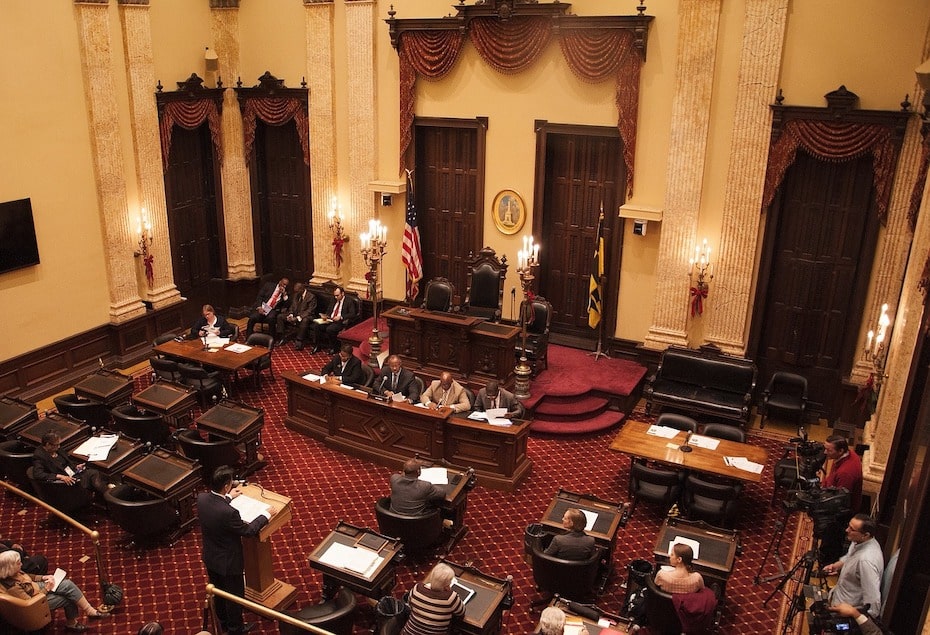Highlights
The following key points on best practices for citizen engagement are discussed in this article:
- Encourage, value, and use input from citizens
- Eliminate barriers, such as language and technology, which get in the way
- Establish citizen-friendly practices for meetings and events
- Share information openly and honestly
- Achieve regulatory compliance through equitable planning and communications practices
- Utilize a modern communications system to optimize cross-channel interaction
👀 👀Why do 56.7% of state and local agencies surveyed feel their citizen engagement and communications are very important? Grab our government research report to get the whole story.
Citizen engagement involves interactions between government officials or agencies and the citizens they serve. In its best form, the engagement results from proactive outreach and communications strategies instead of reactive interactions with frustrated community members.
In the modern era, citizen engagement has expanded to include more emphasis on equitable representation and service, including meeting regulatory standards in public service. The ultimate objective of positive, effective engagement is to achieve trust between governments and communities.
6 communications best practices for citizen engagement
The following is a look at some of the best communications practices to optimize your citizen engagement.
1. Invite, value, and use citizen input
To achieve and maintain citizen engagement, people must feel that the government represents their interests and values their input. The best way to demonstrate that you do have community interests at heart is to invite feedback proactively. Encourage people to share their ideas and input.
Offer direction on when, where, and how citizens can provide input. Listen attentively and acknowledge ideas that come in through digital channels. Tell the community when you enact initiatives derived from publicly sourced methods.
When people believe their thoughts matter, they are more likely to participate in public meetings and events and follow you on social media and other digital platforms.
2. Eliminate barriers
Identify barriers to engagement and eliminate them to the extent possible. In communities with a diverse population, language and translation services are often necessary to include everyone in the communication process.
Accessibility is another common barrier. The technology divide between lower-income and higher-income populations has long been a hurdle. However, many communities have been able to address the internet gap, or plan to, thanks to government funding from the American Rescue Plan Act and the Infrastructure Bill.
3. Establish citizen-friendly practices
When planning meetings and events, prioritize convenience and accessibility for your citizens more than the preferences of your government officials. Hold the meetings in centralized locations with plenty of space to accommodate everyone who wants to attend.
Schedule meetings on regular days that do not compete with typical community events and activities that would get in the way. When possible, televise or broadcast meetings and events so people who cannot attend in person can still participate.
Communicate details of events in as many places as possible to ensure everyone is made aware, and people get reminders across multiple channels. Public flyers, local press releases, your website, and social media are all popular communications methods. An email contact list is a consistent, reliable distribution method for all citizens who opt in.
4. Share openly, honestly, and universally
Engagement and trust are mutually inclusive. Over time, people will grow more or less comfortable interacting with the government based on how much they trust it. The following actions contribute to earning citizens’ trust:
- Share important items: Meeting minutes, community updates, news, and announcements are examples. Use all possible distribution methods to make these available, including public locations, social media, website, blog, interviews, press conferences, videos, and email.
- Be honest and transparent: Some citizens view governments as secretive, covert operations. To overcome this perception, be as transparent as possible. Disclose buying procedures when granting contracts, share key planning details as soon as possible, and address concerns directly.

5. Achieve 100 percent regulatory compliance
In addition to the practical reasons for taking these steps for engagement, local governments have regulatory compliance to consider as well. Governments are required to communicate in ways that are equitable and non-discriminatory based on protected classifications, such as age, race, ethnicity, and gender.
Compliance includes plans for disseminating communication, as well as methods for documenting citizen ideas, input, and feedback. All plans and record-keeping procedures need to prioritize comprehensive, equitable engagement practices.
On December 13th, 2021, President Biden also issued an Executive Order addressing the role of government in providing for the customer (citizen) experience.
“Government must be held accountable for designing and delivering services with a focus on the actual experience of the people whom it is meant to serve. Government must also work to deliver services more equitably and effectively, especially for those who have been historically underserved.”
6. Utilize the best tech tools to engage a digital-centric community
The importance of cross-channel communications is clear. The challenge for governments is usually how to do all of the things it wants to do with limited resources. This point applies to communications strategies as well.
Treating each communication method as a silo is inefficient. Instead, it is usually better to have a group dedicated to managing your communications function across all channels. This approach ensures consistency in your information and message and optimizes efficiency.
A unified communications system is a critical tech platform to enable this holistic communications strategy. It allows individual reps to manage interactions across all popular channels seamlessly. Inbound contacts from citizens are routed based on skill or need, and transfers to particular offices or agents are easy to facilitate.
With the unique access to ARPA and Infrastructure funding, many government agencies have seized the opportunity to prioritize IT projects such as upgrading their tech communications infrastructure.
Let RingCentral streamline citizen engagement
Many of the best practices described here only lead to optimum outcomes when you leverage the best possible communications systems. Great technology empowers your agents and representatives to communicate effectively and efficiently.
RingCentral has a top cross-channel communications solution tailor-made for government agencies. It empowers your team to interact efficiently across all popular channels your community members want and expect. It offers skills-based call routing for citizens who may need language support or someone with particular skills or qualifications. It also offers advanced security features so you can earn trust by protecting the security and privacy of your citizens.
See our government solutions in action when you request a demo.
Originally published Jun 15, 2022
Looking For Startup Consultants ?
Call Pursho @ 0731-6725516
Telegram Group One Must Follow :
For Startups: https://t.me/daily_business_reads




